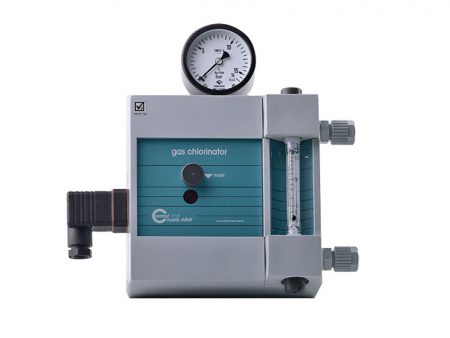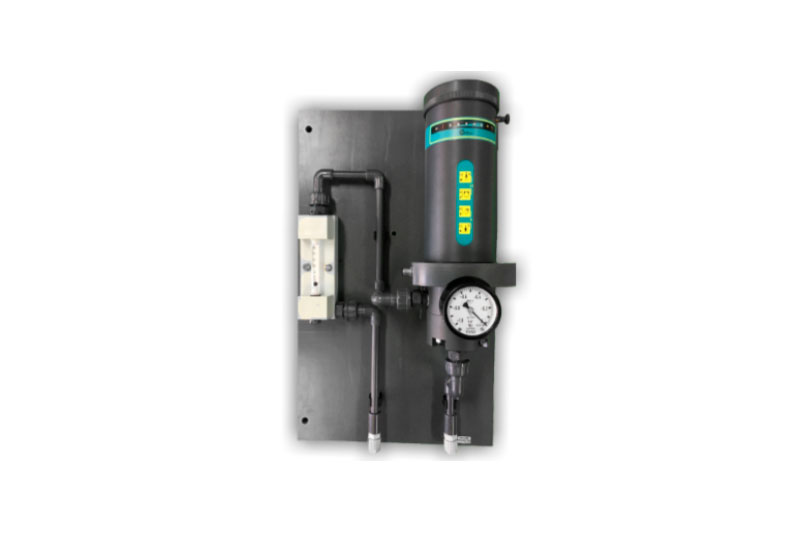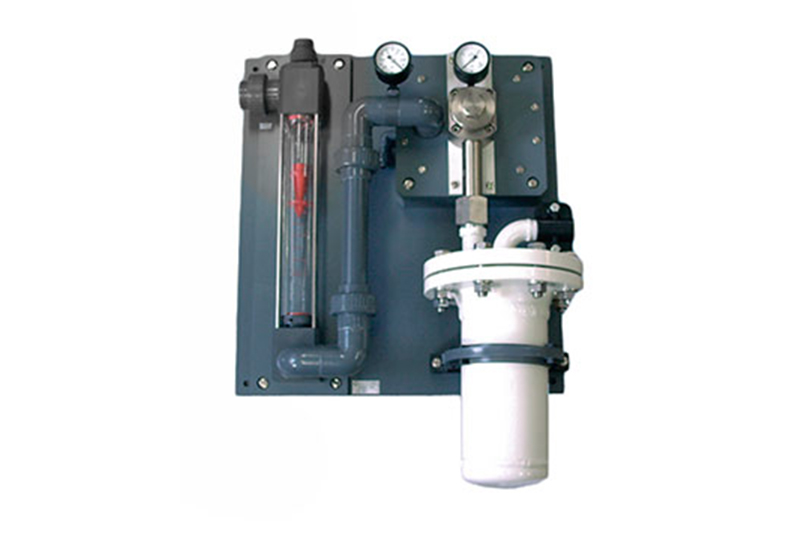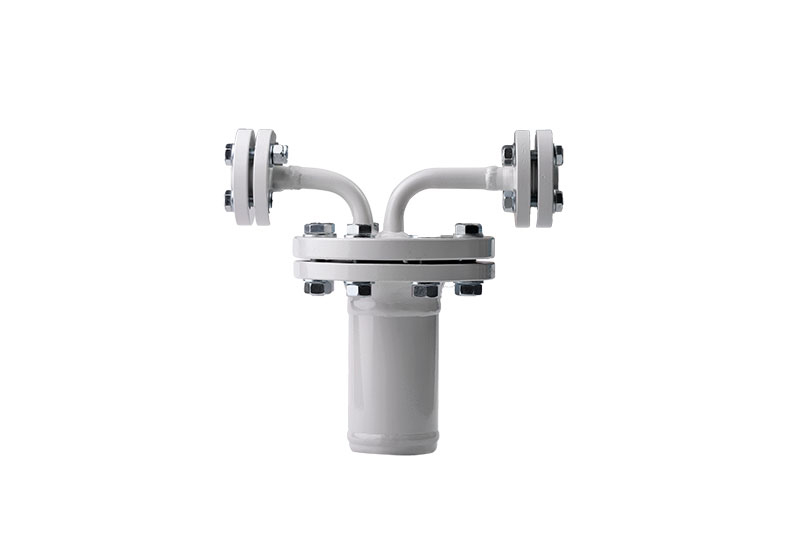Capacity up to 15 kg/h
Vacuum Regulators are a part of chlorination system, designed for dosing gas chlorine and with minor alterations also other gases, working on the indirect vacuum principle.
General
- Integrated gas flow meter
- Rate valve
- Pressure gauge
- Electrical full/empty alarm
- Gas types: Cl2, SO2, CO2, NH3
- Materias: ECTFE foil, FPM/FKM, PTFE,
- Range: from 12g/h to 15kg/h
Vacuum Regulators are designed to feed gas chlorine and with minor alterations also for other gases (SO2, CO2, NH3 ), working on the indirect vacuum principle. They are made of the best and most resistant materials. The springs are made of tantalum alloys, the inlet valve of technically pure silver, the casing of rubber and plastic mixture, the membranes and washers of quality materials like ECTFE foil, FPM/FKM, PTFE, PVDF, which all ensures faultless operation of these devices at high mechanical and temperature load.
Interested in the full interactive system?
Operation principle
Gas pressure (Cl2) builds up only at the back adapter massive part of the regulator. The inlet valve prevents gas from entering the system without control. When the ejector has generated enough vacuum to overcome the force of the check valve, gas chlorine travels along the vacuum line through the flow meter and the rate valve to the ejector, where it thoroughly mixes with water.
The feed rate is set on the precision rate valve. The regulator casing is equipped with optical indicator which signals that the chlorine cylinder is empty. Optionally, we can add a pressure gauge and a switch for electric alarm signal to inform the user that the cylinders are empty.
Gas pressure (Cl2) builds up only at the back adapter massive part of the regulator. The inlet valve prevents gas from entering the system without control. When the ejector has generated enough vacuum to overcome the force of the check valve, gas chlorine travels along the vacuum line through the flow meter and the rate valve to the ejector, where it thoroughly mixes with water.







